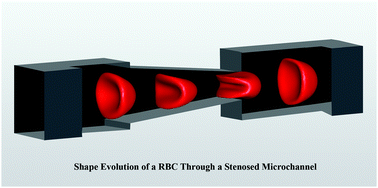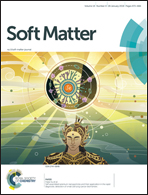Relationship between transit time and mechanical properties of a cell through a stenosed microchannel†
Abstract
The changes in the mechanical properties of a cell are not only the cause of some diseases, but can also be a biomarker for some disease states. In recent times, microfluidic devices with built-in constrictions have been widely used to measure these changes. The transit time in such devices, defined as the time that a cell takes to pass through a constriction, has been found to be a crucial factor associated with the cell mechanical properties. Here, we use smoothed dissipative particle dynamics (SDPD), a particle-based numerical method, to explore the relationship between the transit time and mechanical properties of a cell. Three expressions of the transit time are developed from our simulation data, with respect to the stenosed size of constrictions, the shear modulus and bending modulus of cells, respectively. We show that a convergent constriction (the inlet is wider than the outlet), and a sharp-corner constriction (the constriction outlet is narrow) are better in identifying the differences in the transit time of cells. Moreover, the transit time increases and gradually approaches a constant as the shear modulus of cells increases, but increases first and then decreases as the bending modulus increases. These results suggest that the mechanical properties of cells can indeed be measured by analyzing their transit time, based on the recommended microfluidic device.



 Please wait while we load your content...
Please wait while we load your content...